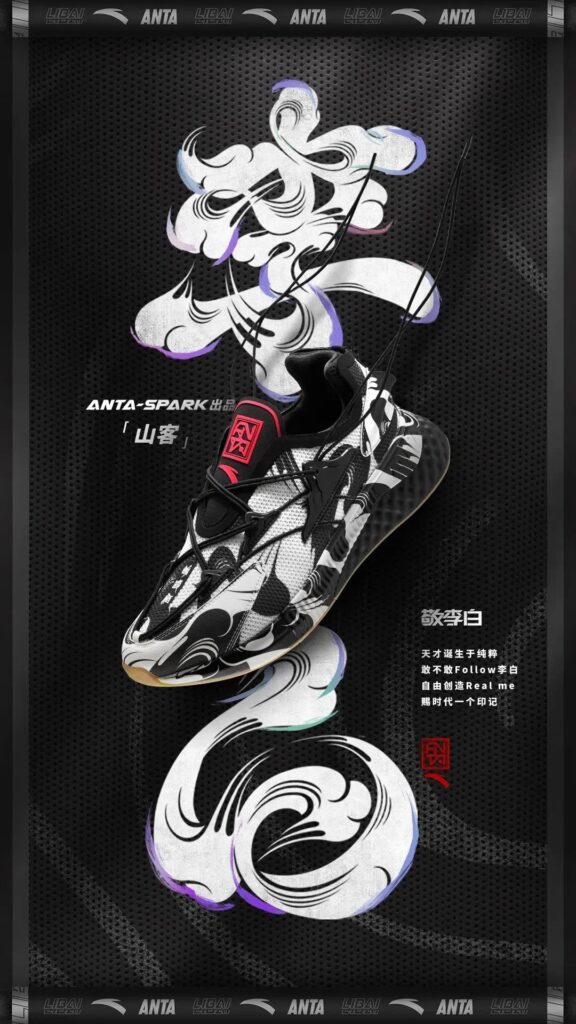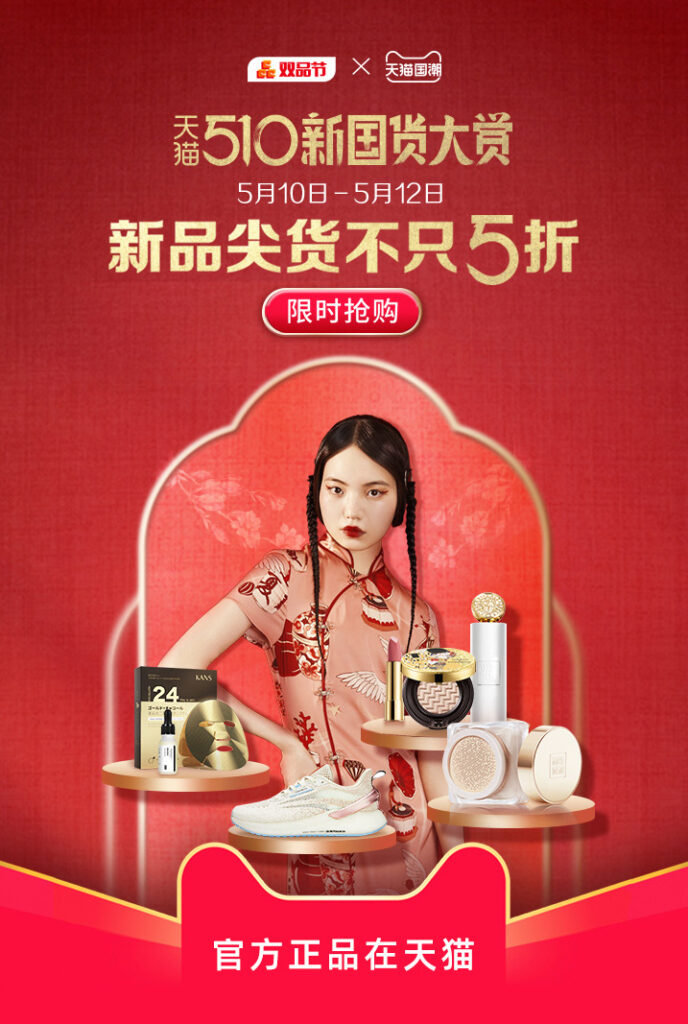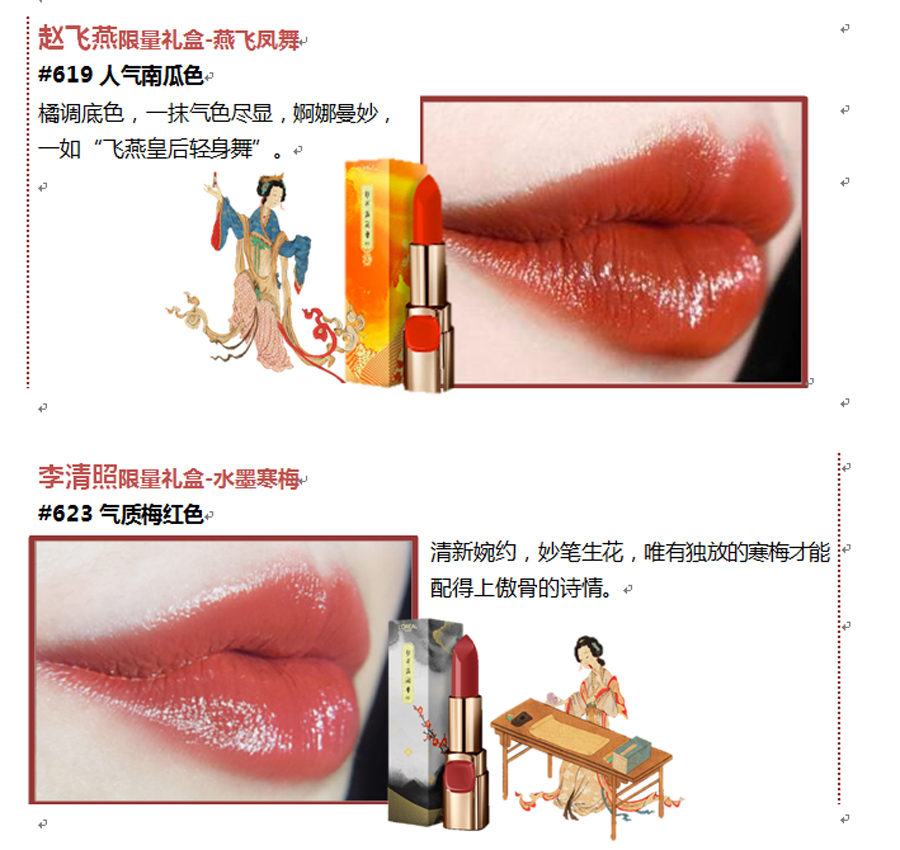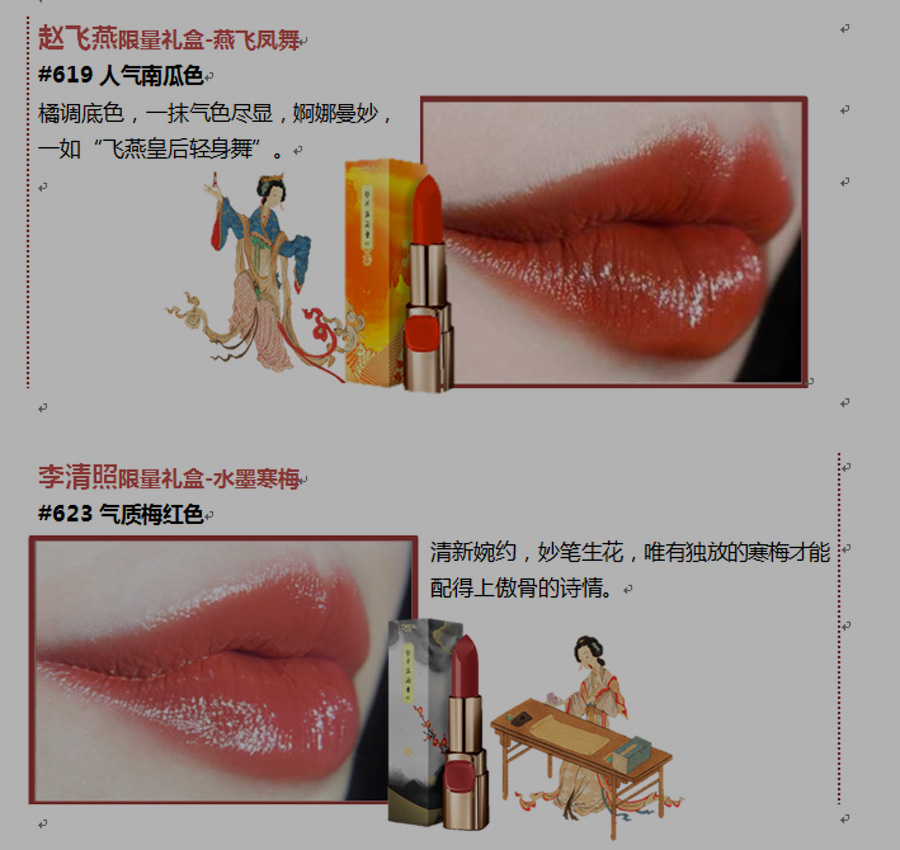Domestic products (国货 guo huo) and local brands have experienced a revival in recent years. Netizens even coined the term “guo chao”, a neologism formed by the words “country” and “fashionable”, first used to identify Li Ning’s streetwear collection after its launch at the 2018 Paris Fashion Week. The collection featured many recognizable symbols for Chinese culture, including the Chinese flag’s colors (red and yellow), and the four characters “中国李宁” (meaning: “China” and “Li-Ning”).
Chinese cultural references and symbols have become increasingly popular, so much so that Chinese country and cultural branding are now part of the visual identity of many domestic brands. For example, in 2020 Anta launched its new “Li Bai Series”, inspired by the famous Tang dynasty poet. The series feature traditional cloud visuals in white and ink black, as well as the Chinese “red character” seal on the shoes’ tongue.

Data shows that online users between 20-29 years pay the most attention to domestic brands, with Gen-Zers (young people born after 1995) representing the largest consumer group of new domestic brands. (Xinhua, 2020) However, the endorsement of Chinese brands is not limited to the younger and trendier segments of the Chinese population: a recent report by American consulting firm Mc Kinsey & Company revealed that between 33% and 57% of the surveyed Chinese consumers prefer local brands in numerous product categories, including food, household appliances, and electronic devices.
Domestic Brands’ Online Celebration
Chinese brands’ promotion travels fast online: in 2019 e-shopping giant Alibaba officially launched the “New Domestic Product Plan”, which was subsequently upgraded in 2020 to help sellers face pandemic-related difficulties. The goal? Help Chinese consumers include at least three Chinese brands in their online shopping carts.
Domestic brands were also the protagonists of 2020’s “Double-Products Online Festival”, held between the 28th and the 10th of May. During this period, consumers were encouraged to go on a shopping spree for high-quality Chinese products, to help stimulate the recovery of the Chinese local retail economy.

DOS and DON’TS for Foreign Brands
Foreign brands must try new strategies to revamp their presence and make their customers feel more understood. But what are the right strategies to adopt and what are the ones to avoid, when trying to represent China?
DOS
Some of the successful strategies used by foreign brands to adapt their products and message in China include:
- Collaborating with Local Cultural Entities
- Partnering up with Local Designers
L’Oréal and National Museum of China
In Spring 2018, beauty brand L’Oréal partnered with the National Museum of China to launch a limited collection of five lipsticks, inspired by the figures of five classical beauties of the Chinese ancient world. The concept for the campaign resembled visual themes of the Hanfu trend, an online born cultural movement that celebrates the splendour of classical China. The collaboration with a prestigious museum allowed the brand to be meticulous in its campaign design, avoiding dangerous historical misrepresentations.

Angel Chen X Adidas Capsule Collection
In 2020, Adidas chose to partner with an upcoming Chinese brand designer Angel Chen. The 2020 Angel Chen X Adidas capsule collection incorporated references to Chinese martial art disciplines, as well futuristic shapes and strong chromatic combinations. The collection featured bumblebee yellow as one of the main colors, taking inspiration from martial arts trainees’ robes. For Adidas, partnering up with a young Chinese designer who was praised on international runways, and who starred in a popular Netflix show, meant being able to catch both Chinese and non-Chinese consumers’ attention without exclusions. The first collaboration between the designer and Adidas proved to be so successful both in China and abroad, that a second capsule collection recently launched in February 2021.

DON’TS
Putting a spin on local trends and traditions is more difficult than foreign brands might suspect. Some of the strategies that proved to be not to so successful include:
- Using non-Mainstream Local Trends
- Being Tone-Deaf to Traditions
Balenciaga and the “Tu Ku” Visual Reference
In August 2020, Balenciaga released four limited-editions bags for Chinese Valentine’s Day. The campaign visually reminded Chinese consumers of the “Tu Ku” style (土酷, literally “earth” and “cool”), a trend loosely based on rural population’s fashion. While the “Tu Ku” style is popular with a small part of Gen-Zers consumers, the majority still considers it “tacky”: hence the criticism of the flowery backdrops featured in the campaign’s images, but also of the bags’ front characters design.

Burberry’s 2019 Spring Festival Campaign
In 2019, the British brand Burberry came under fire for proposing a non-traditional Spring Festival campaign. The campaign, which featured a Chinese family in front of a urban background, was judged to be “out of touch” and not representative of the joyful spirit of the Spring Festival.

Outlook
Chinese brands have been rising in popularity with their domestic audience for the last years, acquiring a following in the younger segment of the population. The popularity of Chinese local brands is also proven by users’ engagement with online shopping festivals celebrating Chinese products.
While local brands have the advantage of mastering Chinese cultural and country branding, foreign brands have been often accused of not understanding Chinese tastes. However, several high-profile campaigns have shown that consumers reward foreign-local collaborations.




